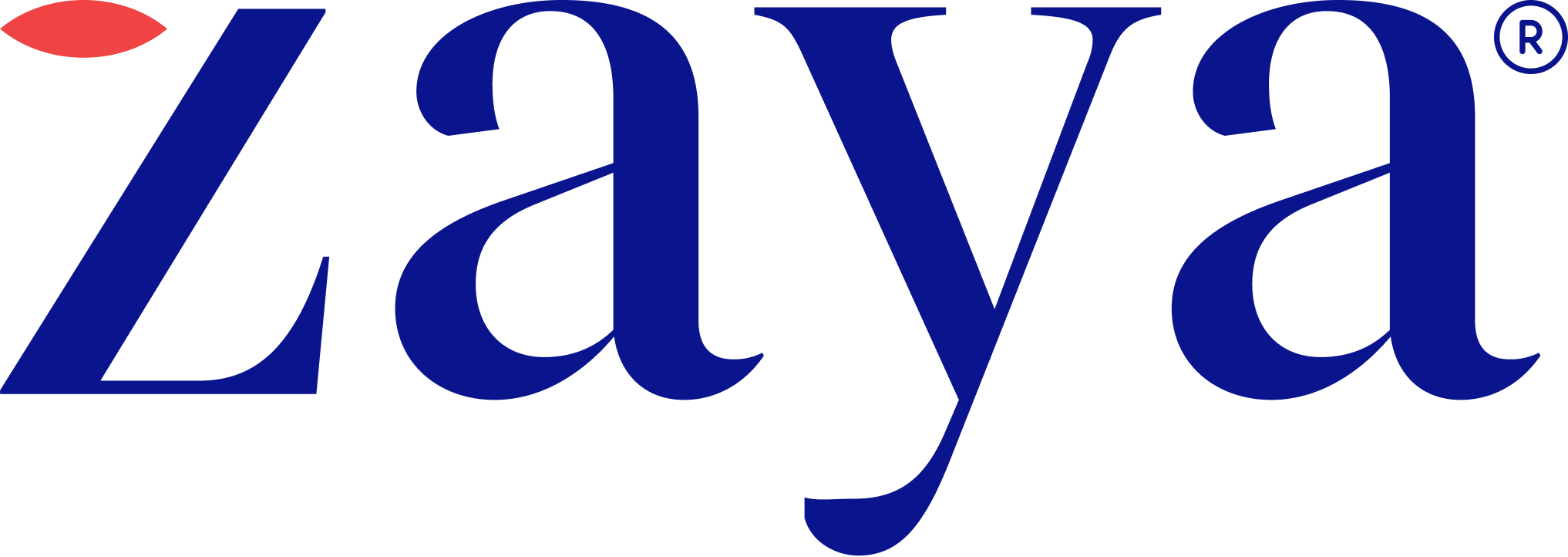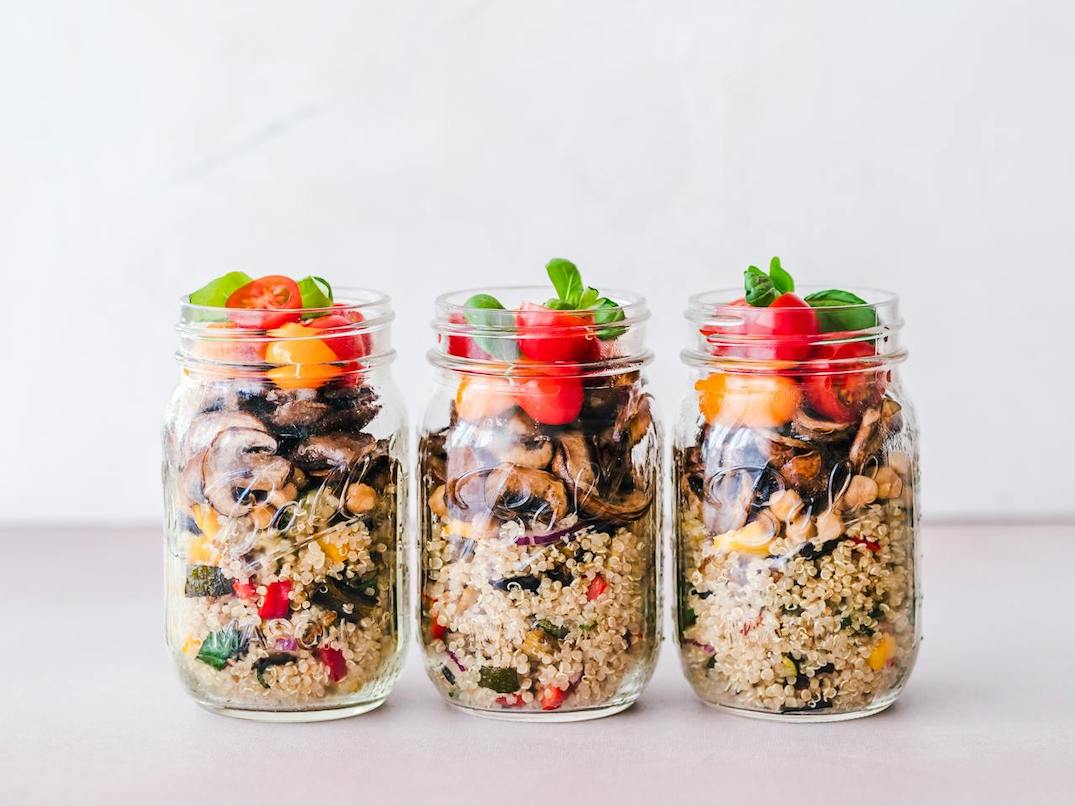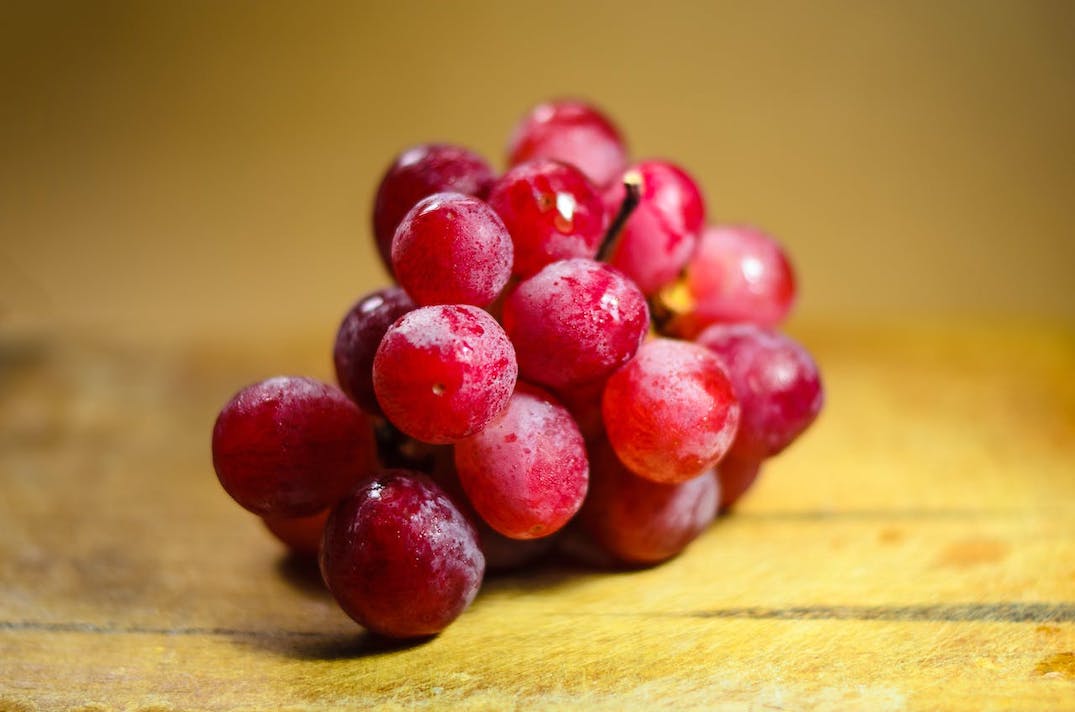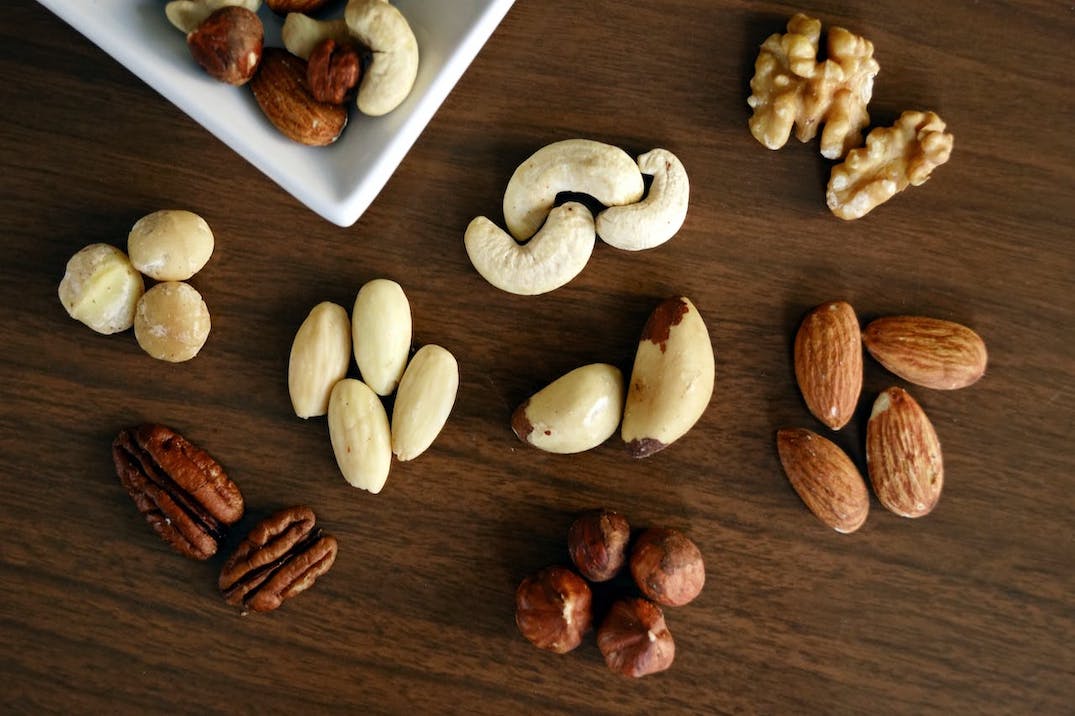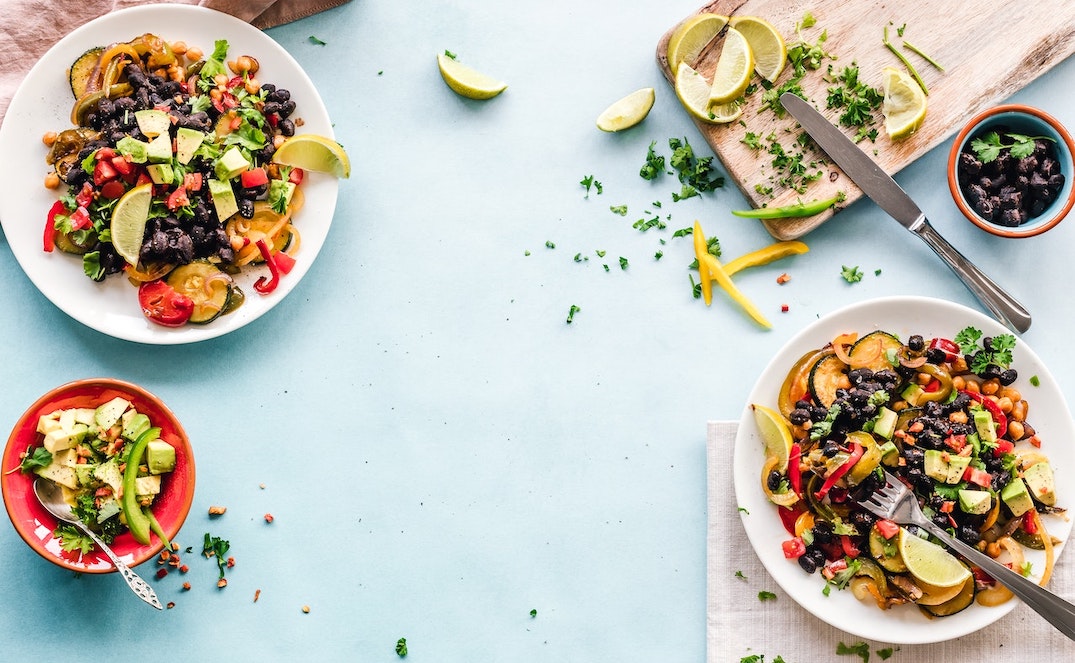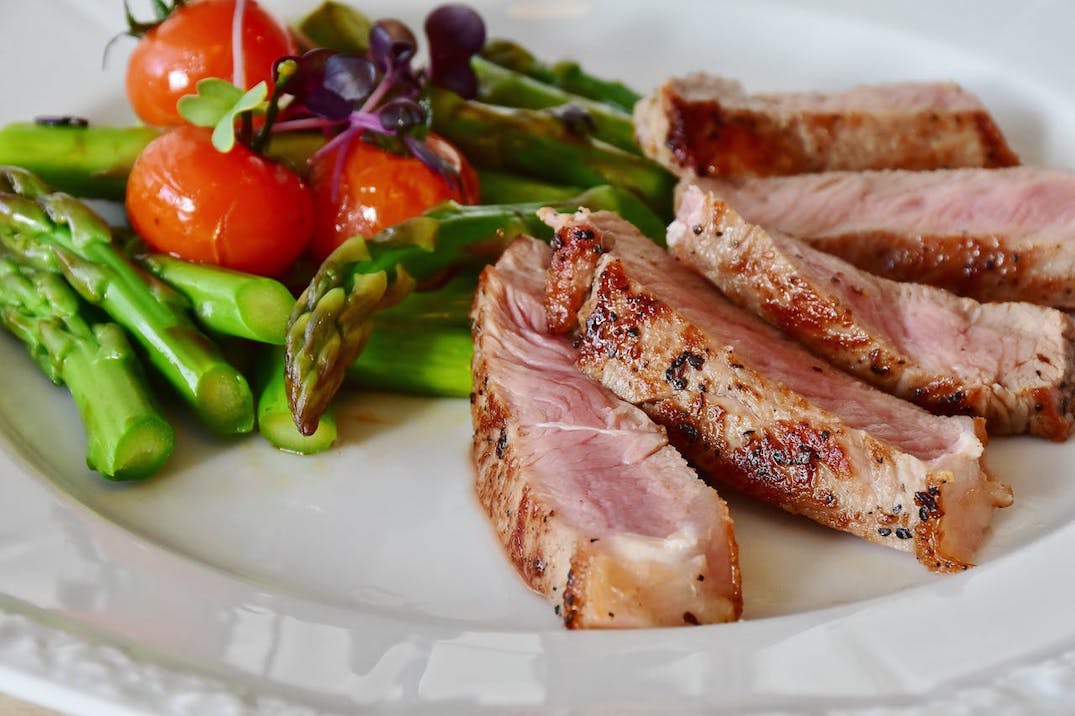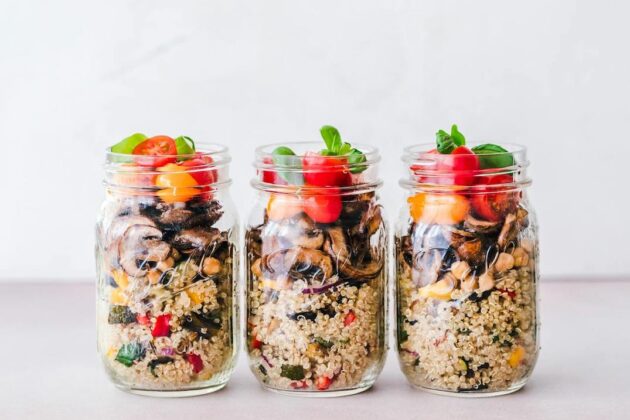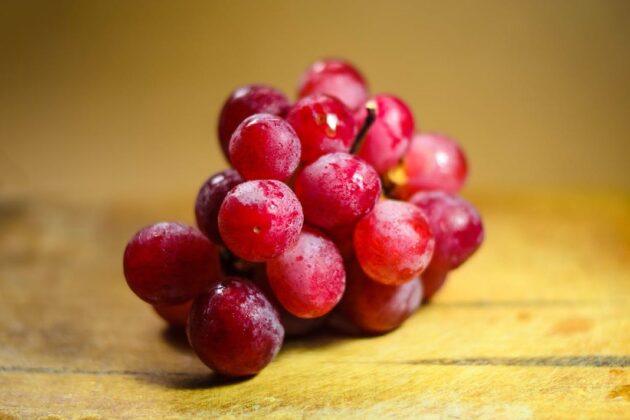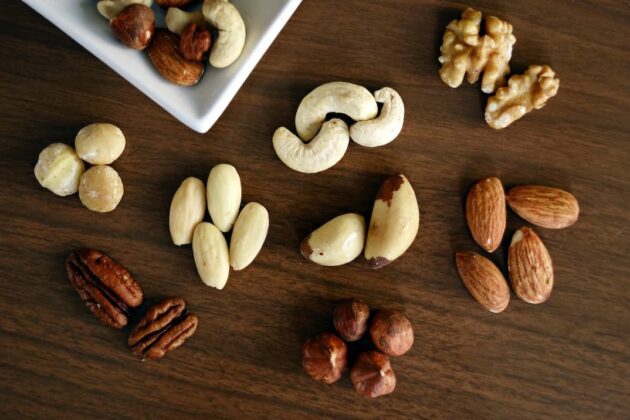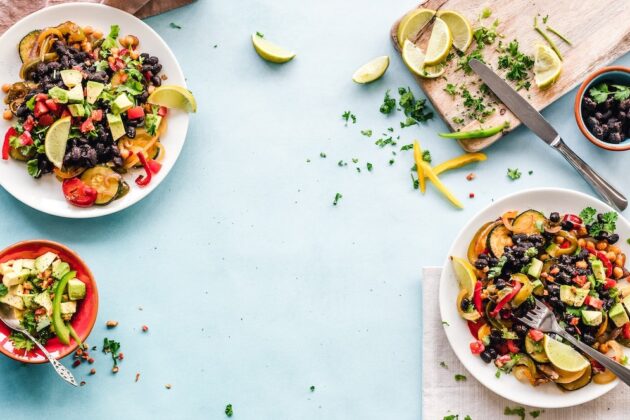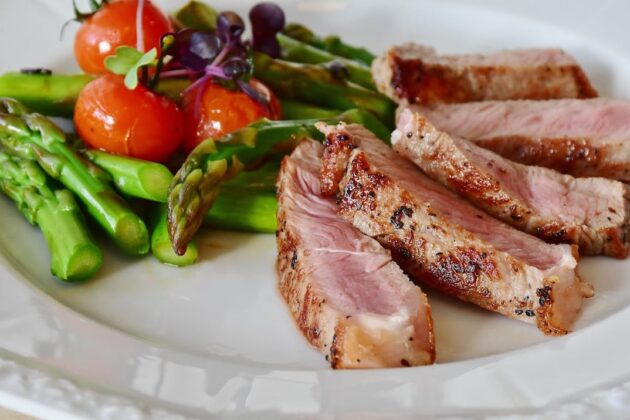7-Day Meal Plan to Lower Cholesterol (PDF Included)
If you’ve ever been told you have high cholesterol levels, you may be wondering what that means and what you can do about it. While there are several cholesterol-lowering medications available, lifestyle intervention is the preferred method for long-term health.
Cholesterol is a fatty substance that circulates in your bloodstream. Elevated cholesterol levels—particularly low-density lipoprotein (LDL) cholesterol—can significantly increase your chances of developing several health complications, including heart disease, stroke, and diabetes.
In high amounts, cholesterol can stick to your artery walls and restrict blood flow or block the artery completely. This can cause elevations in blood pressure and increase the risk of a heart attack or stroke.
You can lower your cholesterol levels naturally by choosing a diet rich in fiber from plant foods such as fruits, vegetables, whole grains, beans, legumes, nuts, and seeds as well as foods low in saturated and trans fats.
Working with a Registered Dietitian (RD) is a great way to make sure you’re eating the ideal diet to lower your cholesterol. Here at Zaya Care, we can match you with a Registered Dietitian who accepts your insurance and preferred visit type. Since we are in-network with many health insurance carriers, 90% of our patients pay $0 for one-on-one nutritional counseling.
This guide goes over a sample 7-day meal plan to lower cholesterol (see PDF here), the best foods to eat, which to avoid, and everything else you need to know.
Best foods to eat to reduce cholesterol
Your diet can play a key role in improving your cholesterol levels. Making diet changes is more cost-effective than medication and is more likely to encourage long-term health.
In fact, incorporating foods such as those rich in soluble fiber, like apples, oats, beans, and legumes, can help remove cholesterol from your body. Additionally, including more plant sterols and stanols found in whole grains, nuts, and legumes in your diet can lower LDL cholesterol levels by reducing its absorption in the gut.
Some of the best foods to start including in your diet now are those mentioned below.
- Whole grains. Whole grains like oats, barley, quinoa, brown rice, and whole wheat are rich sources of soluble fiber which has been shown to help reduce LDL cholesterol levels by binding to it and removing it with waste.
- Legumes. Legumes, beans, and lentils are a rich source of cholesterol-lowering soluble fiber as well as plant sterols and stanols which can positively impact lipid profiles, particularly LDL cholesterol levels.
- Nuts. Almonds, walnuts, and other nuts are rich sources of monounsaturated fats which can aid in reducing inflammation, particularly omega-3 fats which can be found in walnuts. Including more monounsaturated fat sources in the diet is believed to help raise your HDL (good) cholesterol levels without raising your LDL (bad) cholesterol.
- Healthy fats. Avocados, olive oil, and fatty fish (salmon, mackerel, sardines) are good sources of monounsaturated fats which can help to increase your HDL cholesterol levels, lowering your risk of developing a heart attack or stroke.
- Fruits. Fruits such as apples, grapes, strawberries, and citrus provide good sources of fiber as well as plant sterols, stanols, and antioxidants that can aid in reducing LDL cholesterol levels and associated heart disease risk.
- Vegetables. Vegetables like carrots, broccoli, and sweet potatoes are great sources of fiber, antioxidants, and plant sterols and stanols. Consuming a diet rich in both fruits and veggies can help to decrease the risk of developing several health conditions including high cholesterol.
- Soy products. Soy products such as tofu, soy milk, and edamame are great protein swaps for higher-fat cuts of meat. Soy products contain plant stanols and lecithin which are believed to have positive effects on lipids as well as providing antioxidants and beneficial fiber.
- Dark chocolate. Lucky for chocolate lovers, dark chocolate (70% cocoa or higher) may also help improve high cholesterol. Dark chocolate contains a rich source of the plant compound polyphenols which is believed to help boost HDL cholesterol levels.
- Garlic. Garlic is not only good for providing flavor to various dishes, but it can also positively impact cholesterol levels. According to one study, this may be due to garlic’s ability to inhibit cholesterol synthesis by the liver.

Find a dietitian covered by insurance
90% of Zaya Care patients pay $0 for dietitian visits
Foods to avoid with high cholesterol
Now that we know more about foods we should be eating more of for our cholesterol, let’s dive into foods that we need to limit or avoid.
- Red meat. Red meats contain higher amounts of saturated fats which can raise LDL cholesterol levels and inflammation. Swapping out red meats for leaner options, such as chicken, turkey, and seafood, can provide significant benefits to cholesterol levels over time.
- Full-fat dairy products. Full-fat dairy can also contain high amounts of saturated fats, particularly items like cheese. Swapping these out for reduced fat or fat-free dairy products can reduce your total saturated fat intake and cut down on calories.
- Trans fats. Trans fats from partially hydrogenated oils (PHOs) have been found to negatively impact LDL cholesterol levels. These fats are typically found in commercially prepared food items such as baked foods, snack foods, and other processed foods. They will be listed on the nutrition label, and it’s best to avoid them as much as possible.
- Fast food. Fast food typically contains high amounts of saturated fats and calories which can contribute to high cholesterol and obesity. While there are sometimes lighter options available, cooking more foods at home can help you have more control over your food choices and allow you to make healthy swaps for your cholesterol.
- Processed snacks. Processed snack items are high in saturated fats, sodium, and added sugars which can contribute to elevated cholesterol, blood pressure, and obesity. Swap out processed snack foods for whole foods such as fruits or veggies.
- Butter. Butter should be limited in the diet for those with elevated cholesterol levels as the saturated fat content has been shown to increase both total cholesterol levels and LDL cholesterol levels.
- Palm oil. While vegetable oils tend to be lower in saturated fats, palm oil has been linked with raising LDL cholesterol levels more significantly than other types of vegetable oils due to its higher saturated fat content. It should be limited.
- Coconut oil. Similar to palm oil, coconut oil contains higher amounts of saturated fats and has been found to increase LDL cholesterol levels. Those with high cholesterol should limit or avoid the use of coconut oil.
- Alcohol. Alcohol consumption should be limited in those with high cholesterol levels as alcohol can contribute to increases in LDL cholesterol and triglycerides, particularly with heavy consumption.
Sample 7-day meal plan to lower cholesterol
Here is a sample 2,000-calorie, 7-day meal plan to lower cholesterol that includes many of the best foods listed above while avoiding those that can make things worse.
Remember, it’s always important to talk to your doctor and/or dietitian before making any drastic changes to your diet and to learn what is best for your situation.
Your ideal diet may have more or fewer calories and incorporate different foods based on your intolerances, preferences, and other medical conditions.
We recommend working with a registered dietitian to find the ideal diet plan to lower cholesterol for your situation.
Day 1
- Breakfast: Oatmeal topped with sliced strawberries and a sprinkle of almonds.
- Lunch: Quinoa salad with chickpeas, avocado, and a variety of fresh veggies.
- Dinner: Grilled salmon, steamed broccoli, and a side of brown rice.
- Snack: Apple slices with almond butter.
Day 2
- Breakfast: A smoothie with soy milk, banana, and a handful of spinach.
- Lunch: Lentil soup with a side of whole wheat bread.
- Dinner: Stir-fried tofu with mixed vegetables (carrots, broccoli, bell peppers) over quinoa.
- Snack: A handful of walnuts and grapes.
Day 3
- Breakfast: Greek yogurt with mixed berries and a sprinkle of flaxseeds.
- Lunch: Turkey (low-fat) and avocado wrap with whole wheat tortilla, lettuce, and tomato.
- Dinner: Baked mackerel with sweet potato wedges and a green salad.
- Snack: Carrot sticks and hummus.
Day 4
- Breakfast: Scrambled eggs (mostly whites) with spinach and mushrooms.
- Lunch: Chickpea and cucumber salad with olive oil and lemon dressing.
- Dinner: Grilled chicken breast with quinoa and steamed asparagus.
- Snack: A peach and a small handful of almonds.
Day 5
- Breakfast: Overnight oats with a tablespoon of chia seeds and sliced banana.
- Lunch: Brown rice bowl with edamame, shredded carrots, and sliced avocado with a soy sauce dressing.
- Dinner: Baked trout with a side of mixed greens in olive oil dressing.
- Snack: Dark chocolate (a small piece) and a handful of strawberries.
Day 6
- Breakfast: Smoothie bowl with soy milk, frozen berries, and topped with granola.
- Lunch: Whole grain pasta salad with cherry tomatoes, spinach, and feta cheese.
- Dinner: Roasted chicken (skinless) with Brussels sprouts and a baked sweet potato.
- Snack: Greek yogurt with a drizzle of honey and walnuts.
Day 7
- Breakfast: Whole grain pancakes topped with a berry compote.
- Lunch: Baked falafel with a side of tabbouleh and tzatziki sauce.
- Dinner: Grilled shrimp with garlic and olive oil over barley.
- Snack: Sliced pear with a handful of pistachios.
Tips for making your meal plan work for you
If you are creating a meal plan to help you manage your cholesterol levels, make sure to tailor it to your preferences and lifestyle to ensure it’s easy to adopt.
Below are some quick tips to help you form a successful meal plan that’s easy to stick to.
- Meal prep before each week. Have a plan of action at the start of each week and prep your meals and snacks up to make your life easier. This could include both cooking and portioning out meals ahead of time or choosing a few types of protein, veggies, and carbs to prep ahead to mix and match through the week or anything in between.
- Keep healthy snacks easily accessible. To avoid grabbing highly processed snack foods, keep your fridge and pantry stocked with healthy options. When the snack attack hits, you are far more likely to make a healthy choice if you have good foods on hand.
- Choose lean cuts of meat and skinless poultry. Swap out your proteins for lean options like skinless chicken breast, ground turkey, and seafood. Limit red meats and choose leaner cuts when possible (such as 97% lean grass-fed ground beef).
- Use cooking methods like baking, grilling, steaming, or sautéing instead of frying. Cut out extra fat and calories by exploring alternative methods for cooking that reduce or remove the oil. Experiment with different seasonings for a new take on some of your favorite recipes that will be a lot better for your cholesterol.
- Monitor portion sizes. Overeating can also increase the risk of elevated cholesterol levels. Keep your portion sizes in check and fill your plate with filling foods such as lean proteins, high-fiber whole grains, and plenty of fruits and vegetables.
- Stay hydrated with water throughout the day. Prioritize your hydration levels throughout the day and cut out or limit sugary beverages. Keep a refillable water bottle on hand to help you monitor how much water you’ve had and encourage you to increase your intake.
- Keep a food diary to track what you eat. A food diary can help hold you accountable for your food choices and make you aware of some of your food habits. This can be an effective way to spot challenge areas and address them through small shifts in your food choices.
- Read food labels to avoid hidden fats and sugars. When choosing packaged items, always read the nutrition label to spot any hidden saturated fats and added sugars. Try to choose items that contain low amounts of these or swap them for whole foods.
- Stick to your grocery list to avoid impulse buys. Always shop prepared. Bring a list of the items you need for your meals and snacks for the week and try to stick with those items to eliminate impulse purchases that may not align with your health goals.
Why we recommend working with a Registered Dietitian if you have high cholesterol
While many Americans suffer from high cholesterol levels, that doesn’t mean it’s normal. If left untreated, high cholesterol can lead to heart attacks and strokes.
Many individuals aren’t sure what they should be doing with their diet to improve these important numbers. Working with a nutrition expert, such as a registered dietitian (RD), can help you better understand what works for you to improve your cholesterol and your overall health.
RDs are nutrition professionals who specialize in helping people make changes in their diet to better control their conditions, including high cholesterol. An RD can provide you with individualized guidance and support to help you meet your goals and take back control of your health.
You can use Zaya Care’s Dietitian Search Tool to take the first step toward cholesterol management with an RD on your side.
When you request an appointment with one of our Registered Dietitians here at Zaya Care, we’ll check your insurance, so you know exactly how much you’ll have to pay, if anything at all.
It’s worth noting that 90% of Zaya Care patients pay $0 for nutrition care with a registered dietitian as we are in-network with many major carriers.

Find a dietitian covered by insurance
90% of Zaya Care patients pay $0 for dietitian visits
If you’ve ever been told you have high cholesterol levels, you may be wondering what that means and what you can do about it. While there are several cholesterol-lowering medications available, lifestyle intervention is the preferred method for long-term health.
Cholesterol is a fatty substance that circulates in your bloodstream. Elevated cholesterol levels—particularly low-density lipoprotein (LDL) cholesterol—can significantly increase your chances of developing several health complications, including heart disease, stroke, and diabetes.
In high amounts, cholesterol can stick to your artery walls and restrict blood flow or block the artery completely. This can cause elevations in blood pressure and increase the risk of a heart attack or stroke.
You can lower your cholesterol levels naturally by choosing a diet rich in fiber from plant foods such as fruits, vegetables, whole grains, beans, legumes, nuts, and seeds as well as foods low in saturated and trans fats.
Working with a Registered Dietitian (RD) is a great way to make sure you’re eating the ideal diet to lower your cholesterol. Here at Zaya Care, we can match you with a Registered Dietitian who accepts your insurance and preferred visit type. Since we are in-network with many health insurance carriers, 90% of our patients pay $0 for one-on-one nutritional counseling.
This guide goes over a sample 7-day meal plan to lower cholesterol (see PDF here), the best foods to eat, which to avoid, and everything else you need to know.
Best foods to eat to reduce cholesterol
Your diet can play a key role in improving your cholesterol levels. Making diet changes is more cost-effective than medication and is more likely to encourage long-term health.
In fact, incorporating foods such as those rich in soluble fiber, like apples, oats, beans, and legumes, can help remove cholesterol from your body. Additionally, including more plant sterols and stanols found in whole grains, nuts, and legumes in your diet can lower LDL cholesterol levels by reducing its absorption in the gut.
Some of the best foods to start including in your diet now are those mentioned below.
- Whole grains. Whole grains like oats, barley, quinoa, brown rice, and whole wheat are rich sources of soluble fiber which has been shown to help reduce LDL cholesterol levels by binding to it and removing it with waste.
- Legumes. Legumes, beans, and lentils are a rich source of cholesterol-lowering soluble fiber as well as plant sterols and stanols which can positively impact lipid profiles, particularly LDL cholesterol levels.
- Nuts. Almonds, walnuts, and other nuts are rich sources of monounsaturated fats which can aid in reducing inflammation, particularly omega-3 fats which can be found in walnuts. Including more monounsaturated fat sources in the diet is believed to help raise your HDL (good) cholesterol levels without raising your LDL (bad) cholesterol.
- Healthy fats. Avocados, olive oil, and fatty fish (salmon, mackerel, sardines) are good sources of monounsaturated fats which can help to increase your HDL cholesterol levels, lowering your risk of developing a heart attack or stroke.
- Fruits. Fruits such as apples, grapes, strawberries, and citrus provide good sources of fiber as well as plant sterols, stanols, and antioxidants that can aid in reducing LDL cholesterol levels and associated heart disease risk.
- Vegetables. Vegetables like carrots, broccoli, and sweet potatoes are great sources of fiber, antioxidants, and plant sterols and stanols. Consuming a diet rich in both fruits and veggies can help to decrease the risk of developing several health conditions including high cholesterol.
- Soy products. Soy products such as tofu, soy milk, and edamame are great protein swaps for higher-fat cuts of meat. Soy products contain plant stanols and lecithin which are believed to have positive effects on lipids as well as providing antioxidants and beneficial fiber.
- Dark chocolate. Lucky for chocolate lovers, dark chocolate (70% cocoa or higher) may also help improve high cholesterol. Dark chocolate contains a rich source of the plant compound polyphenols which is believed to help boost HDL cholesterol levels.
- Garlic. Garlic is not only good for providing flavor to various dishes, but it can also positively impact cholesterol levels. According to one study, this may be due to garlic’s ability to inhibit cholesterol synthesis by the liver.

Find a dietitian covered by insurance
90% of Zaya Care patients pay $0 for dietitian visits
Foods to avoid with high cholesterol
Now that we know more about foods we should be eating more of for our cholesterol, let’s dive into foods that we need to limit or avoid.
- Red meat. Red meats contain higher amounts of saturated fats which can raise LDL cholesterol levels and inflammation. Swapping out red meats for leaner options, such as chicken, turkey, and seafood, can provide significant benefits to cholesterol levels over time.
- Full-fat dairy products. Full-fat dairy can also contain high amounts of saturated fats, particularly items like cheese. Swapping these out for reduced fat or fat-free dairy products can reduce your total saturated fat intake and cut down on calories.
- Trans fats. Trans fats from partially hydrogenated oils (PHOs) have been found to negatively impact LDL cholesterol levels. These fats are typically found in commercially prepared food items such as baked foods, snack foods, and other processed foods. They will be listed on the nutrition label, and it’s best to avoid them as much as possible.
- Fast food. Fast food typically contains high amounts of saturated fats and calories which can contribute to high cholesterol and obesity. While there are sometimes lighter options available, cooking more foods at home can help you have more control over your food choices and allow you to make healthy swaps for your cholesterol.
- Processed snacks. Processed snack items are high in saturated fats, sodium, and added sugars which can contribute to elevated cholesterol, blood pressure, and obesity. Swap out processed snack foods for whole foods such as fruits or veggies.
- Butter. Butter should be limited in the diet for those with elevated cholesterol levels as the saturated fat content has been shown to increase both total cholesterol levels and LDL cholesterol levels.
- Palm oil. While vegetable oils tend to be lower in saturated fats, palm oil has been linked with raising LDL cholesterol levels more significantly than other types of vegetable oils due to its higher saturated fat content. It should be limited.
- Coconut oil. Similar to palm oil, coconut oil contains higher amounts of saturated fats and has been found to increase LDL cholesterol levels. Those with high cholesterol should limit or avoid the use of coconut oil.
- Alcohol. Alcohol consumption should be limited in those with high cholesterol levels as alcohol can contribute to increases in LDL cholesterol and triglycerides, particularly with heavy consumption.
Sample 7-day meal plan to lower cholesterol
Here is a sample 2,000-calorie, 7-day meal plan to lower cholesterol that includes many of the best foods listed above while avoiding those that can make things worse.
Remember, it’s always important to talk to your doctor and/or dietitian before making any drastic changes to your diet and to learn what is best for your situation.
Your ideal diet may have more or fewer calories and incorporate different foods based on your intolerances, preferences, and other medical conditions.
We recommend working with a registered dietitian to find the ideal diet plan to lower cholesterol for your situation.
Day 1
- Breakfast: Oatmeal topped with sliced strawberries and a sprinkle of almonds.
- Lunch: Quinoa salad with chickpeas, avocado, and a variety of fresh veggies.
- Dinner: Grilled salmon, steamed broccoli, and a side of brown rice.
- Snack: Apple slices with almond butter.
Day 2
- Breakfast: A smoothie with soy milk, banana, and a handful of spinach.
- Lunch: Lentil soup with a side of whole wheat bread.
- Dinner: Stir-fried tofu with mixed vegetables (carrots, broccoli, bell peppers) over quinoa.
- Snack: A handful of walnuts and grapes.
Day 3
- Breakfast: Greek yogurt with mixed berries and a sprinkle of flaxseeds.
- Lunch: Turkey (low-fat) and avocado wrap with whole wheat tortilla, lettuce, and tomato.
- Dinner: Baked mackerel with sweet potato wedges and a green salad.
- Snack: Carrot sticks and hummus.
Day 4
- Breakfast: Scrambled eggs (mostly whites) with spinach and mushrooms.
- Lunch: Chickpea and cucumber salad with olive oil and lemon dressing.
- Dinner: Grilled chicken breast with quinoa and steamed asparagus.
- Snack: A peach and a small handful of almonds.
Day 5
- Breakfast: Overnight oats with a tablespoon of chia seeds and sliced banana.
- Lunch: Brown rice bowl with edamame, shredded carrots, and sliced avocado with a soy sauce dressing.
- Dinner: Baked trout with a side of mixed greens in olive oil dressing.
- Snack: Dark chocolate (a small piece) and a handful of strawberries.
Day 6
- Breakfast: Smoothie bowl with soy milk, frozen berries, and topped with granola.
- Lunch: Whole grain pasta salad with cherry tomatoes, spinach, and feta cheese.
- Dinner: Roasted chicken (skinless) with Brussels sprouts and a baked sweet potato.
- Snack: Greek yogurt with a drizzle of honey and walnuts.
Day 7
- Breakfast: Whole grain pancakes topped with a berry compote.
- Lunch: Baked falafel with a side of tabbouleh and tzatziki sauce.
- Dinner: Grilled shrimp with garlic and olive oil over barley.
- Snack: Sliced pear with a handful of pistachios.
Tips for making your meal plan work for you
If you are creating a meal plan to help you manage your cholesterol levels, make sure to tailor it to your preferences and lifestyle to ensure it’s easy to adopt.
Below are some quick tips to help you form a successful meal plan that’s easy to stick to.
- Meal prep before each week. Have a plan of action at the start of each week and prep your meals and snacks up to make your life easier. This could include both cooking and portioning out meals ahead of time or choosing a few types of protein, veggies, and carbs to prep ahead to mix and match through the week or anything in between.
- Keep healthy snacks easily accessible. To avoid grabbing highly processed snack foods, keep your fridge and pantry stocked with healthy options. When the snack attack hits, you are far more likely to make a healthy choice if you have good foods on hand.
- Choose lean cuts of meat and skinless poultry. Swap out your proteins for lean options like skinless chicken breast, ground turkey, and seafood. Limit red meats and choose leaner cuts when possible (such as 97% lean grass-fed ground beef).
- Use cooking methods like baking, grilling, steaming, or sautéing instead of frying. Cut out extra fat and calories by exploring alternative methods for cooking that reduce or remove the oil. Experiment with different seasonings for a new take on some of your favorite recipes that will be a lot better for your cholesterol.
- Monitor portion sizes. Overeating can also increase the risk of elevated cholesterol levels. Keep your portion sizes in check and fill your plate with filling foods such as lean proteins, high-fiber whole grains, and plenty of fruits and vegetables.
- Stay hydrated with water throughout the day. Prioritize your hydration levels throughout the day and cut out or limit sugary beverages. Keep a refillable water bottle on hand to help you monitor how much water you’ve had and encourage you to increase your intake.
- Keep a food diary to track what you eat. A food diary can help hold you accountable for your food choices and make you aware of some of your food habits. This can be an effective way to spot challenge areas and address them through small shifts in your food choices.
- Read food labels to avoid hidden fats and sugars. When choosing packaged items, always read the nutrition label to spot any hidden saturated fats and added sugars. Try to choose items that contain low amounts of these or swap them for whole foods.
- Stick to your grocery list to avoid impulse buys. Always shop prepared. Bring a list of the items you need for your meals and snacks for the week and try to stick with those items to eliminate impulse purchases that may not align with your health goals.
Why we recommend working with a Registered Dietitian if you have high cholesterol
While many Americans suffer from high cholesterol levels, that doesn’t mean it’s normal. If left untreated, high cholesterol can lead to heart attacks and strokes.
Many individuals aren’t sure what they should be doing with their diet to improve these important numbers. Working with a nutrition expert, such as a registered dietitian (RD), can help you better understand what works for you to improve your cholesterol and your overall health.
RDs are nutrition professionals who specialize in helping people make changes in their diet to better control their conditions, including high cholesterol. An RD can provide you with individualized guidance and support to help you meet your goals and take back control of your health.
You can use Zaya Care’s Dietitian Search Tool to take the first step toward cholesterol management with an RD on your side.
When you request an appointment with one of our Registered Dietitians here at Zaya Care, we’ll check your insurance, so you know exactly how much you’ll have to pay, if anything at all.
It’s worth noting that 90% of Zaya Care patients pay $0 for nutrition care with a registered dietitian as we are in-network with many major carriers.

Find a dietitian covered by insurance
90% of Zaya Care patients pay $0 for dietitian visits
